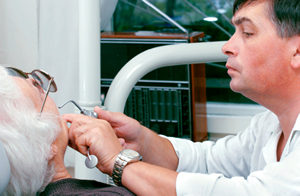 No one likes being poked. We get that. A lot of people have issues with their gums being poked during dental examinations. We don’t poke at your gums in order to make you uncomfortable, we are actually poking around your gums as a diagnostic tool. Not sure how some poking leads to diagnosis about your gum health? Keep reading for former details.
No one likes being poked. We get that. A lot of people have issues with their gums being poked during dental examinations. We don’t poke at your gums in order to make you uncomfortable, we are actually poking around your gums as a diagnostic tool. Not sure how some poking leads to diagnosis about your gum health? Keep reading for former details.
Gum Poking Is Very Important
When your dental hygienist pokes at your teeth, he or she is figuring out how each tooth and gum are doing. Each tooth has a level of thickness at the gumline, in other words, the gum has a natural position on the tooth.
The more that gum have pulled away from the tooth, the less gum is available to protect the teeth. For example, if your hygienist says one of your teeth is a 2, that is a healthy amount of gum around a tooth.
You want to hear your dental hygienist use a number from 1 to 3, because those are optimal numbers. A few 4s are not horrible, but it may signal inflammation, or the beginning of gum disease. If your hygienist calls out 5s or 6s, this indicates gum disease, and they will need to be treated.
Each tooth must be poked in the front and rear of the tooth at the gumline in order to get an accurate measure of the depth of the gums, and whether or not the gumline has receded. The earlier we notice that you are having a problem with your gums, the sooner we can begin treatment for your gums before more damage takes place.
If you have questions about your gum health, or you want to make sure your gums are at their best, give us a call. We can schedule an appointment with you to talk about gum health and the importance of maintaining healthy gums.
